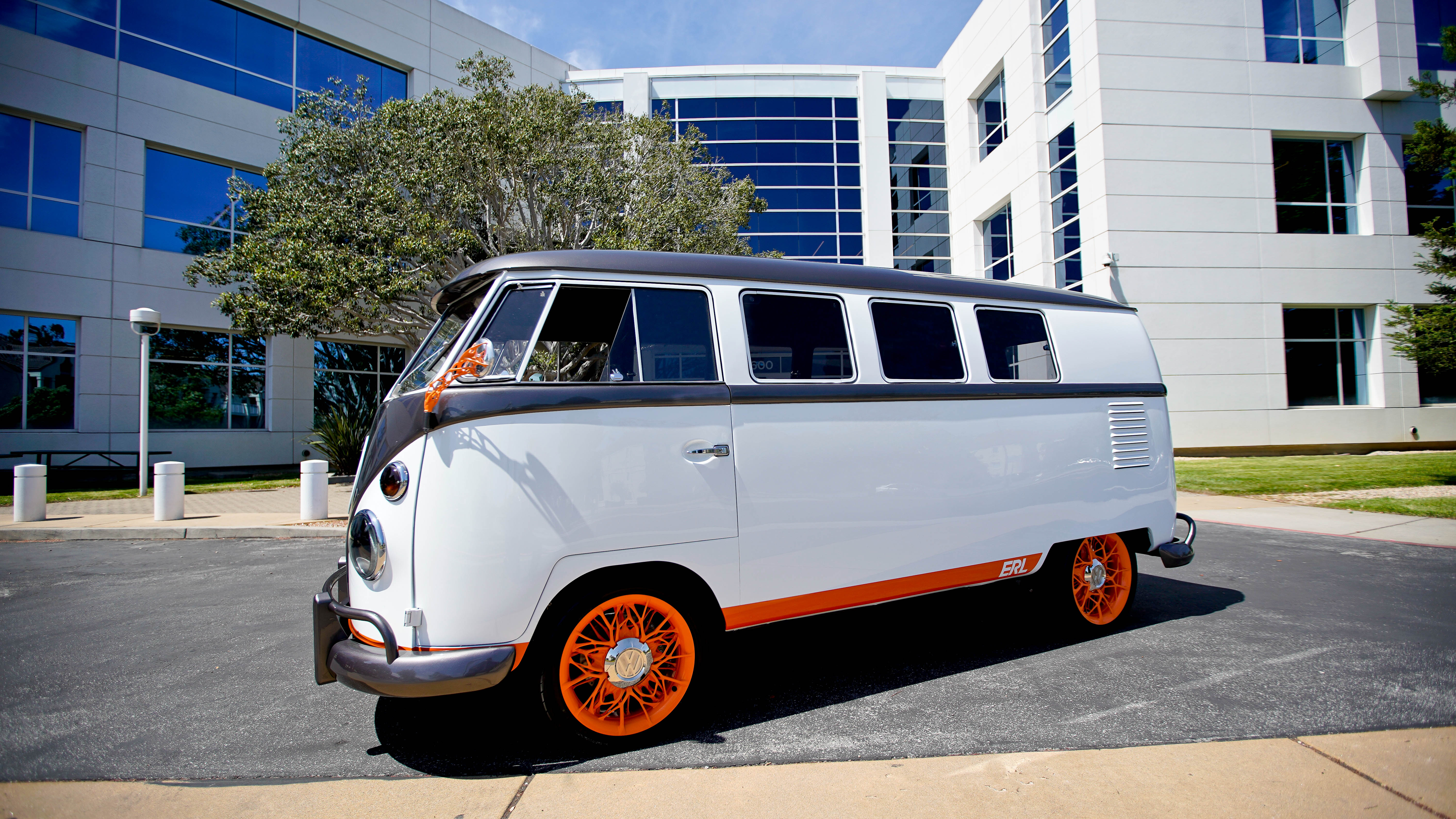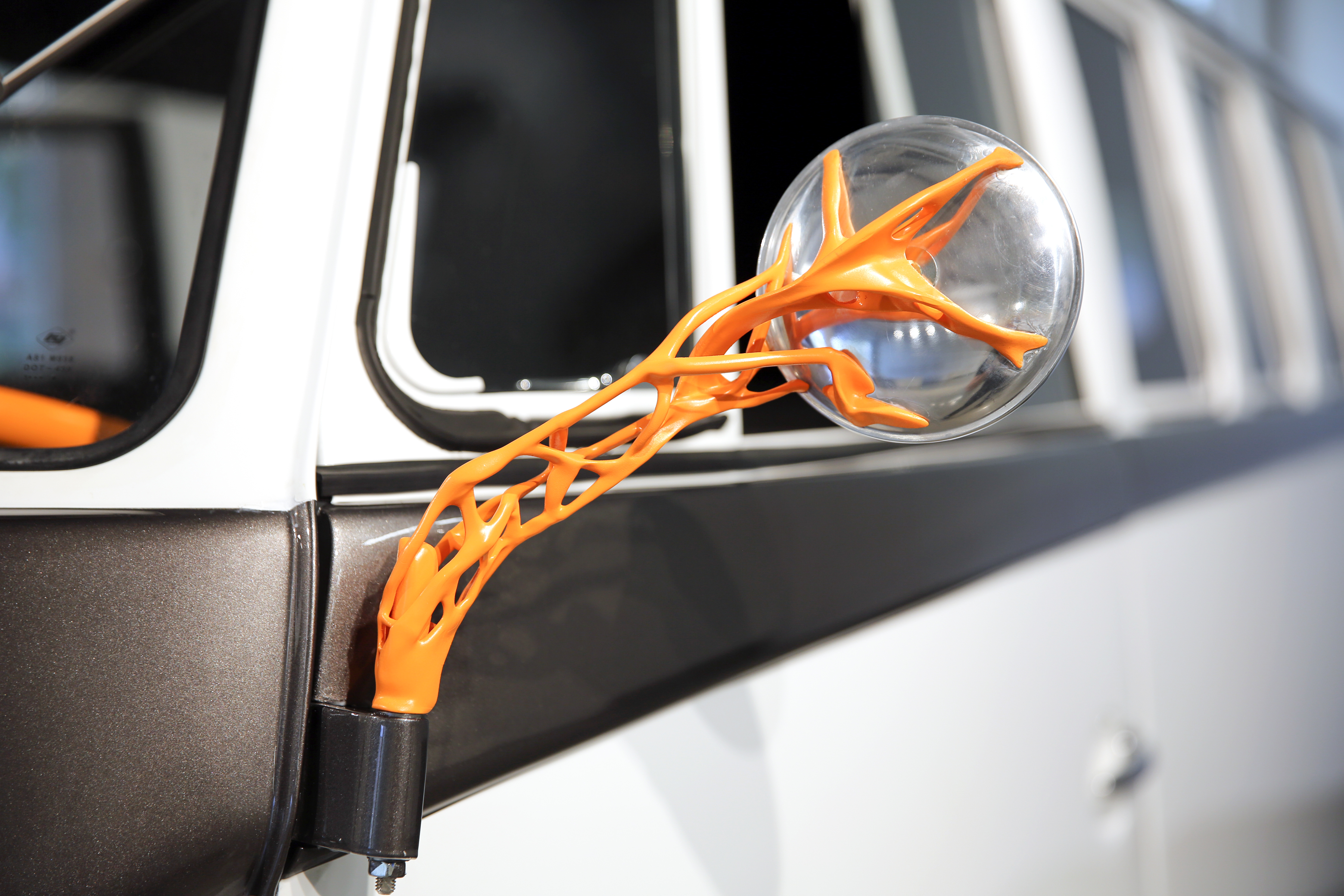Volkswagen Group of America has announced the expansion and rebranding of its California-based Electronics Research Laboratory (ERL) with a unique concept vehicle integrating additive manufacturing.
The electric Type 20 concept car is built from a 1962 Type 2 11-window Microbus and showcases a variety of experimental 3D printed parts both in its interior and exterior. In tandem with its debut, the ERL has been introduced as the Innovation and Engineering Center California (IECC) and is expected to be the largest Volkswagen vehicle research facility outside Germany.
“The future of the Volkswagen Group will be defined by our success in developing new technology that is designed to meet our customers’ needs,” said Scott Keogh, President and CEO, Volkswagen Group of America.
“As we roll out the next generation of electric and autonomous vehicles, innovation will increasingly define who we are.”

The Innovation and Engineering Center California
Based in Silicon Valley, the former ERL served as the Volkswagen Group’s research and innovation hub for over 20 years. Within this time, its employees grew from three upon in 1998 to more than 180 engineers, social scientists, researchers and product designers. This facility has been responsible for several vehicle technologies, including predictive navigation and online speech. The Type 20 concept car was created to celebrate the two decades of innovation.
Now, the newly presented IECC will be comprised of two entities: the Innovation Center California (ICC), one of three global Group Innovation centers focused on “lighthouse projects” for VW Group brands, and the Engineering Center California (ECC), which will focus on connected car, intelligent cockpit, and autonomous driving and parking development projects in North American.
Recently, Audi AG, also expanded production at its Volkswagen Group R8 facility, the Böllinger Höfe, with a separate 3D printing department for custom 3D printed parts, including auxiliary tools, to save on maintenance costs. In addition, Volkswagen opened a new advanced 3D printing center in Wolfsburg, Germany, housing a range of cutting edge metal additive manufacturing machines.

The Type 20 concept car
As well as bio metric identification, and a holographic dashboard display, the Type 20 has used generative design in collaboration with Autodesk, to develop 3D printed rims, wing mirrors, seating fixtures, and a steering wheel – for a more lightweight and streamlined vehicle.
“The Type 20 is a fantastic example of how we celebrate our heritage while striving to advance our technology,” explained Nikolai Reimer, Senior Vice President of the IECC. “We are excited to move into our next chapter as the IECC, to continue designing innovations that will bring the Volkswagen Group vehicles into the future with cutting-edge technology.”
The Type 20, as well as other project innovations, will be on display at the IECC to celebrate the company’s history in Silicon Valley.

For all the latest 3D printing news and reviews subscribe to the 3D Printing Industry newsletter, follow us on Twitter and like us on Facebook. Also, join 3D Printing Jobs now for new opportunities in engineering.
Featured image shows the Type 20 concept car. Photo via Volkswagen.

